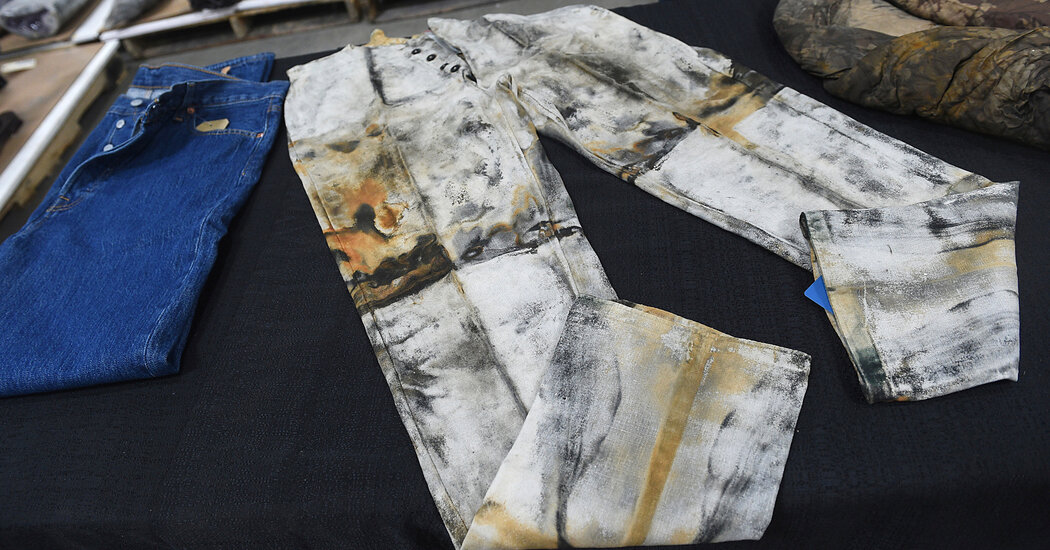Work pants that sold for $114,000 at auction this month after being recovered from an 1857 shipwreck could be an early version of Levi Strauss jeans, auction officials said, though a company historian said it was “speculation” used to be.
The Holabird Western Americana Collections auction on December 3 showed 270 items recovered from the SS Central America, which was traveling from Panama to New York in September 1857 when it sank in a hurricane with 425 people on board.
The wreck was discovered off the coast of South Carolina in 1988 and the rights to the treasures, including thousands of pounds of Californian gold, have since become the subject of a decades-long legal battle.
The pants were found in a suitcase belonging to John Dement, a veteran of the Mexican-American War from Oregon. Mr. Dement was a buyer for his family’s merchant shop and, on business trips to buy goods, survived many stormy ship journeys, including the sinking of the SS Central America, according to the auction catalog.
Mr. Dement’s suitcase was recovered in 1991 and the items it contained, including socks, nightgowns and paperback books, were salvageable because the suitcase contained little to no oxygen.
The condition of the trunk prevented its contents from exhibiting the bacterial degradation and biological consumption seen in items more exposed to the shipwreck, Robert Evans, the SS Central America project’s chief scientist and historian, said in the auction catalog.
In the suitcase, scientists also found the work pants, made of a thick unknown material and covered with black and brown spots. It was not clear who made the winning bid for the pants.
Holabird Western Americana Collections said the work pants could be affiliated with Levi Strauss because he was a major dry goods seller during the Gold Rush and lost treasure in the shipwreck. The unlabeled pants have a five-button pattern on the fly, and the buttons are “almost identical in size and crafted style,” further convincing the sellers that the pants could have been made by or for Strauss, according to the auction catalogue.
Mr. Strauss and his associate, Jacob Davis, patented the first modern jeans in 1873, 16 years after the SS Central America sank.
Tracey Panek, a historian and director of the Levi Strauss & Co. Archives, said in an email that linking the pants to Mr. Strauss was speculative.
Ms. Panek, who personally inspected the pants and other artifacts from the wreckage, said that while she was thrilled by the discovery, she saw nothing that would link the pants to Mr. Strauss.
“From the white color, the lack of suspender buttons, five fly buttons instead of four, and the unusual design of the fly with extra buttonholes on the side, to the non-denim fabric that is much lighter than the fabric LS & Co. uses. earliest riveted clothing, the Dement trunk trousers are not typical of the miner’s work trousers in our records,’ said Ms Panek.
Regardless of the pants’ origin, at the time of the shipwreck, they would not have come close to the value of other loot on the SS Central America.
Passengers boarded the ship with gold coins and nuggets, which had been collected in the gold mining towns of Northern California during the gold rush. California’s business center at the time was San Francisco, where passengers boarded the SS Sonora before transferring to Panama’s ill-fated SS Central America.
More than a century after the ship sank, treasure hunter Thomas G. Thompson found the wreck. He was later accused of not providing the proceeds of the trek to the 161 people who invested in his search.
Some investors sued Mr. Thompson in 2012 and he was ordered to appear in court and disclose the location of the gold recovered from the shipwreck. He fled and became a fugitive until U.S. marshals arrested him in a Florida hotel in 2015. He has been in federal prison since 2015.

